At CERN, eight-inch sensor chips from Infineon could reveal the mysteries of the universe
Munich, Germany, and Villach, Austria – April 26, 2016 – Ninety-five percent of the universe is still considered unexplored. Scientists at CERN, the world’s largest particle physics research center, located in Geneva, are working on solving these mysteries. In May 2012, researchers there discovered the so-called Higgs Boson, whose prediction won Peter Higgs and François Englert the Nobel prize in physics. One of the things CERN scientists are researching at the moment is dark matter: Although it may well have five times the mass of visible matter in the universe, this extent can only be indirectly proved. With a bit of luck, CERN will also succeed in generating dark matter.
A unique sensor chip can contribute to proving the existence of dark matter: It is eight inches or 15 cm x 10 cm and was developed jointly by Infineon Technologies Austria and the Austrian Academy of Sciences’ Institute of High Energy Physics (HEPHY). Tens of thousands of these silicon components could be used at CERN in the near future. They are not only more economical to produce than previous sensors, which measured up to six inches. The components also stand up better to constant radiation and thus age slower than the previous generation. Planned experiments will scarcely be possible without resistant sensors.
The experiments at CERN are analyzing the structure of matter and the interplay among elementary particles: Protons are accelerated almost to the speed of light and then made to collide, giving rise to new particles whose properties can be reconstructed with various detectors. “In particle physics and cosmology, there are many questions that are still open and to which mankind still has no answer,” says Dr. Manfred Krammer, head of the Experimental Physics Department at CERN. “To make new advances in these areas, we need a new generation of particle sensors. Cooperation with high-tech companies like Infineon allows us to develop the technologies we need for that.”
As tall as an apartment building and 100 meters below ground
Two of the detectors for which the use of the Infineon sensors is currently being tested are named ATLAS (A Toroidal LHC Apparatus) and CMS (Compact Muon Solenoid). Particle physics experiments are huge cameras: When particles penetrate the silicon detectors, it registers them. With twenty meters (ATLAS) respectively fifteen meters (CMS) height both experiments are located 100 meters below ground. They have been in almost round-the-clock operation for years, carrying out 40 million individual experiments each second. The two sides are currently discussing possible production of chips with a total area of up to 1,000 m².
But researchers need a great deal of persistence. “It may take generations for the basic research to change everyday life,” says Andreas Urschitz, head of the Power Management & Multimarket Division at Infineon Technologies AG. “That mustn’t keep people from research. Without Marie Curie, we wouldn’t have the X-ray, and without Maxwell, we wouldn’t have cell phones.” Marie Curie coined the term “radioactivity” in 1898. James Clerk Maxwell’s equations, with which the Scottish physicist described electromagnetism between 1861 and 1864, are already 150 years old.
The technology developed for CERN could help cancer patients in less than ten years: Several groups of researchers are currently testing proton computed tomography. The medical imaging procedure is based on the same fundamentals as the chip technology for CERN. Large silicon detectors like the ones Infineon and HEPHY are developing could supply tomographic images during therapeutic radiation. This would better determine the position of the tumor, allowing less damage to be done to healthy tissue than is possible with conventional X-rays. It would reduce the radiation load by a factor of 40.
In the research community, Infineon’s production of the sensors has already attracted attention: At the presentation of the 2014 Houska Award, Austria’s largest private prize for commercially relevant research, the project by Infineon and HEPHY won second place.
About Infineon
Infineon Technologies AG is a world leader in semiconductor solutions that make life easier, safer and greener. Microelectronics from Infineon is the key to a better future. In the 2015 fiscal year (ending September 30), the company reported sales of about Euro 5.8 billion with some 35,400 employees worldwide. Infineon is listed on the Frankfurt Stock Exchange (ticker symbol: IFX) and in the USA on the over-the-counter market OTCQX International Premier (ticker symbol: IFNNY).
Follow us: twitter.com/Infineon - facebook.com/Infineon - plus.google.com/+Infineon
Information Number
INFXX201604-047
Press Photos
-
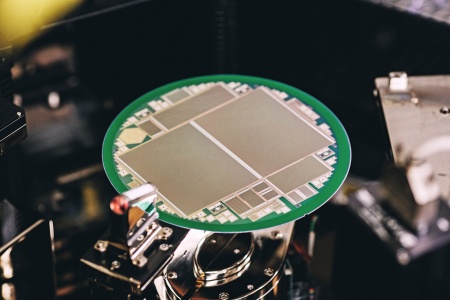 Elementary particle strip sensor with a size of 15 cm x 10 cm in the center of the wafer (Photo: Infineon Technologies Austria AG / Reprint free of charge)Infineon_Sensorchip_1
Elementary particle strip sensor with a size of 15 cm x 10 cm in the center of the wafer (Photo: Infineon Technologies Austria AG / Reprint free of charge)Infineon_Sensorchip_1JPG | 1.32 mb | 2126 x 1417 px
-
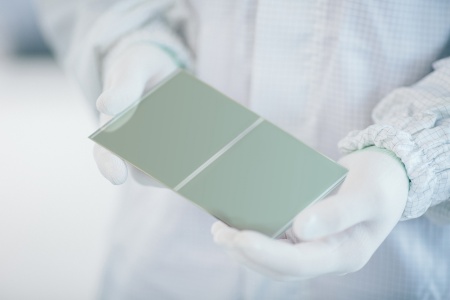 Elementary particle strip sensor with a size of 15 cm x 10 cm (Photo: Infineon Technologies Austria AG / Reprint free of charge)Infineon_Sensorchip_2
Elementary particle strip sensor with a size of 15 cm x 10 cm (Photo: Infineon Technologies Austria AG / Reprint free of charge)Infineon_Sensorchip_2JPG | 564 kb | 2126 x 1417 px
-
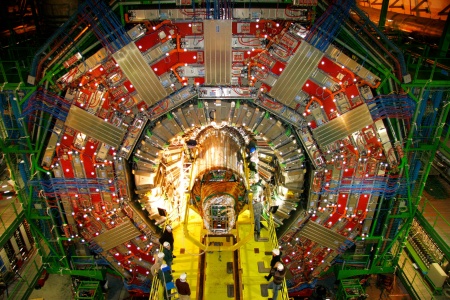 Installation of the world's largest silicon tracking detector in the CMS experiment (Photo: CERN / Reprint free of charge)CERN_1
Installation of the world's largest silicon tracking detector in the CMS experiment (Photo: CERN / Reprint free of charge)CERN_1JPG | 1.93 mb | 2126 x 1417 px
-
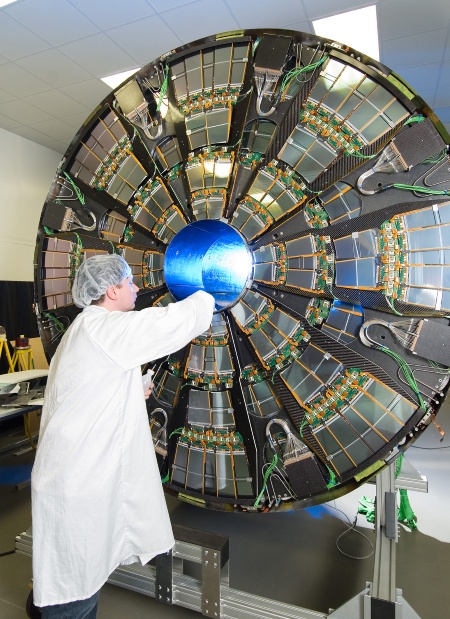 One end-cap of the CMS tracker is opened during installation work (Photo: CERN / Reprint free of charge)CERN_2
One end-cap of the CMS tracker is opened during installation work (Photo: CERN / Reprint free of charge)CERN_2JPG | 1.37 mb | 1545 x 2126 px
-
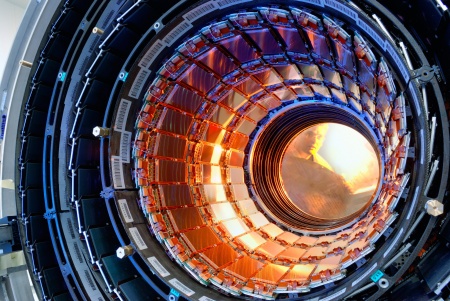 First half of CMS inner tracker barrel (Photo: CERN / Reprint free of charge)CERN_3
First half of CMS inner tracker barrel (Photo: CERN / Reprint free of charge)CERN_3JPG | 1.57 mb | 2126 x 1423 px
